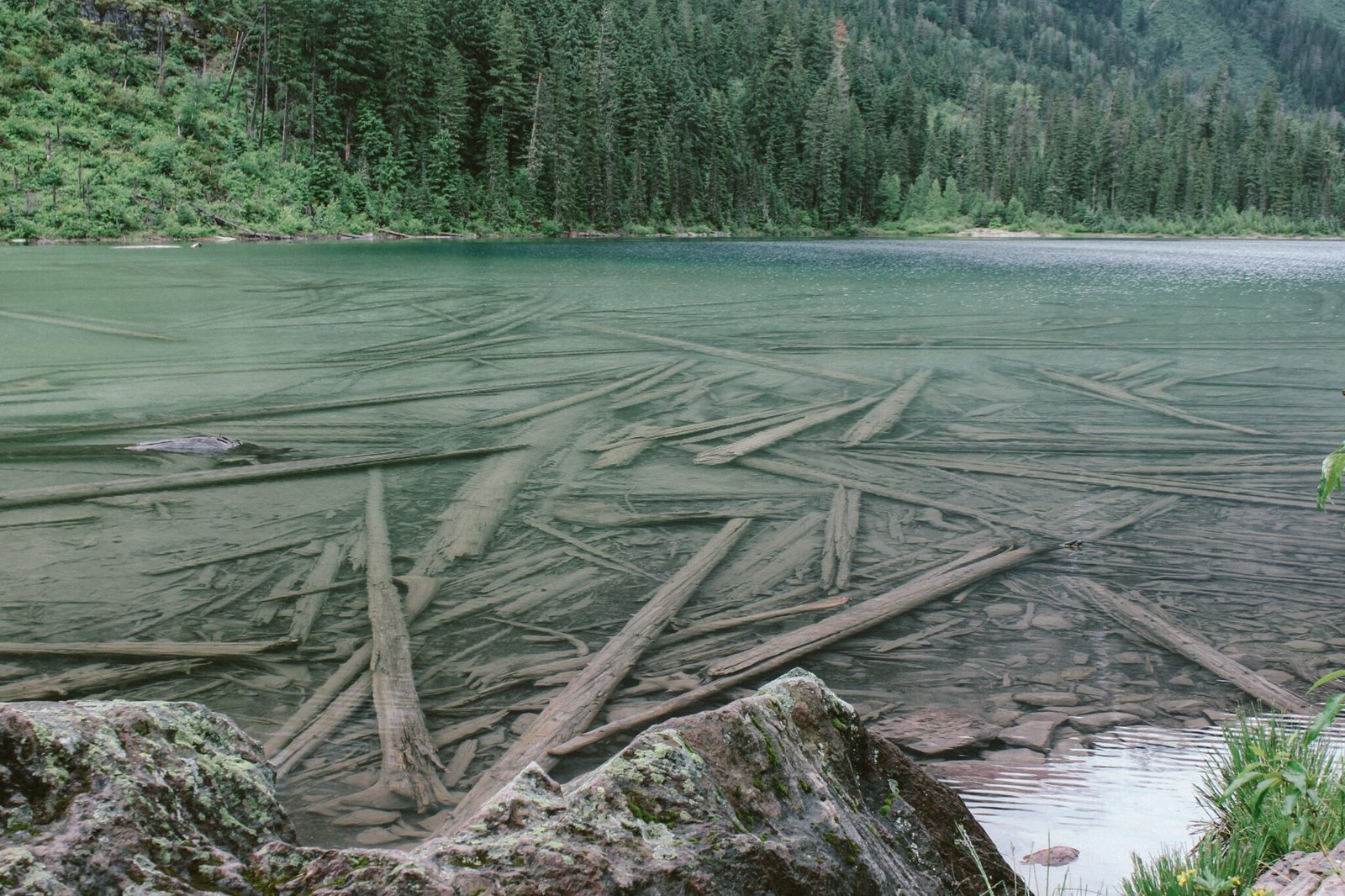The Lake Ozark water temperature is one of the most influential factors shaping life and recreation in Missouri’s most famous lake region. Whether you’re planning a fishing trip, a summer getaway, or just love understanding nature, knowing how the lake’s water temperature changes through the seasons can help you plan the perfect visit.
In this guide, we’ll explore the latest insights about Lake Ozark water temperature — from monthly averages and how they affect fishing and swimming to what environmental changes mean for the future of this iconic lake.
An Overview of Lake Ozark and Its Environment
Before diving into temperature specifics, it’s worth appreciating what makes this body of water special. The Lake of the Ozarks, located in central Missouri, was created by the construction of the Bagnell Dam on the Osage River in 1931. It stretches across four counties and offers more than 1,100 miles of shoreline, making it longer than the California coast.
The area surrounding Lake Ozark has a humid continental climate, meaning that summers are warm and humid, while winters can get chilly. These climate variations are what cause the Lake Ozark water temperature to fluctuate dramatically throughout the year — and that variation determines everything from fish behavior to the best time to go boating.
Monthly and Seasonal Changes in Lake Ozark Water Temperature
The Lake Ozark water temperature doesn’t remain constant. It goes through a natural cycle of warming and cooling depending on the time of year, air temperature, and sunlight exposure. Here’s what that looks like throughout the seasons.
Spring: Warming Up After the Chill (March – May)
As the winter chill fades, spring brings a steady rise in both air and water temperatures. The average Lake Ozark water temperature in early March usually lingers around 45°F (7°C) but climbs steadily as the sun grows stronger.
By late May, the water can reach 70°F (21°C), creating ideal conditions for early-season fishing and boating.
Typical Temperature Range:
-
March: 43–50°F (6–10°C)
-
April: 55–65°F (13–18°C)
-
May: 65–72°F (18–22°C)
Activities:
Spring marks the start of bass and crappie fishing. As the water warms, fish move into shallower areas to spawn. For visitors, this season offers mild weather, fewer crowds, and gorgeous blooming landscapes.
Summer: Peak Warmth and Lake Life (June – August)
Summer at Lake Ozark is all about sunshine, swimming, and water sports. By June, the Lake Ozark water temperature climbs above 75°F (24°C) and can reach as high as 86°F (30°C) in July and August. The lake feels refreshing without being cold, making it one of the best summer getaways in the Midwest.
Typical Temperature Range:
-
June: 74–80°F (23–27°C)
-
July: 80–86°F (27–30°C)
-
August: 78–84°F (26–29°C)
Activities:
Swimming, paddleboarding, and wakeboarding are at their best during this period. Water clarity also improves, allowing for snorkeling and diving in the lake’s coves.
Local Tip: While the surface warms up, deeper areas stay cooler — around 65°F (18°C) — offering comfortable refuge for fish and divers alike.
Autumn: Cooling Down Gracefully (September – November)
Fall at Lake Ozark is breathtaking. The air turns crisp, and the lake begins to cool, yet it remains comfortable for boating and fishing until late October.
Typical Temperature Range:
-
September: 75–78°F (24–26°C)
-
October: 63–70°F (17–21°C)
-
November: 50–60°F (10–15°C)**
Activities:
Autumn is prime fishing season, as fish become more active before winter. It’s also a perfect time for photographers and travelers who prefer quieter lakefront experiences.
Fun Fact: The changing leaf colors reflecting off the water make early October one of the most picturesque times to visit.
Winter: The Lake’s Resting Phase (December – February)
Winter brings stillness and solitude to Lake Ozark. The water temperature typically drops between 38°F and 45°F (3–7°C), depending on weather severity. Although it rarely freezes over entirely, smaller coves and shallow bays might form thin layers of ice.
Typical Temperature Range:
-
December: 45–48°F (7–9°C)
-
January: 38–44°F (3–6°C)
-
February: 40–47°F (4–8°C)**
Activities:
While swimming isn’t recommended, winter fishing attracts enthusiasts targeting deep-water bass and catfish. It’s also an excellent season for peaceful cabin stays and scenic photography without crowds.
What Influences Lake Ozark Water Temperature?
The Lake Ozark water temperature is shaped by several environmental and physical factors that interact throughout the year:
1. Air Temperature and Weather Patterns
Air temperature has the strongest impact. Prolonged hot days raise the lake’s surface temperature, while cold fronts can rapidly cool it. Sudden storms also mix the water layers, redistributing heat.
2. Water Depth and Thermocline
Lake Ozark’s average depth is about 60 feet, but some sections reach over 100 feet. Deeper zones maintain cooler temperatures even during summer. This difference creates a “thermocline” — a layer where warm and cold water meet.
3. Sunlight Exposure
Longer daylight hours during summer enhance surface heating. Shaded coves or areas under bridges stay noticeably cooler.
4. Flow from the Bagnell Dam
Water release schedules from the dam can alter temperature in specific sections. When cooler water from the lower layers is released, downstream temperatures drop temporarily.
5. Human Influence
Boat traffic, marinas, and shoreline developments may slightly alter localized temperatures due to wave action and water movement, though overall effects are minor.
Why Water Temperature Matters for Lake Ozark Visitors
The Lake Ozark water temperature isn’t just a statistic — it directly affects recreation, tourism, and the local ecosystem.
Fishing
Fish species respond differently to temperature changes:
-
Bass and Crappie: Most active between 55°F and 75°F.
-
Catfish: Prefer warmer water above 70°F.
-
Trout (in nearby stocked areas): Thrive in cooler waters under 65°F.
Knowing the water temperature helps anglers predict fish location and feeding behavior.
Swimming and Water Sports
Most people find 75–85°F (24–29°C) perfect for swimming. Anything cooler can feel brisk but refreshing on hot days. Jet skiing, wakeboarding, and kayaking are popular throughout summer.
Diving
Divers favor early summer or late fall for clearer water visibility, as algae levels drop when temperatures moderate.
Environmental Impacts of Temperature Shifts
Fluctuations in Lake Ozark water temperature don’t just influence recreation — they also affect the lake’s health and biodiversity.
-
Algae Growth: Warm water encourages algae blooms, reducing water clarity.
-
Oxygen Levels: Higher temperatures lower oxygen concentration, stressing aquatic life.
-
Fish Migration: Extreme shifts can drive fish to deeper, more stable zones.
-
Ecosystem Balance: Seasonal cooling helps reset the lake’s natural equilibrium, promoting nutrient cycling.
Conservation programs run by the Missouri Department of Conservation and local lake associations continually monitor these patterns to maintain ecological balance.
How to Check Current Lake Ozark Water Temperature
You don’t have to guess — real-time updates are widely available:
-
U.S. Geological Survey (USGS) monitoring stations.
-
Local marina thermometers and boat rental offices.
-
Weather apps with lake-specific readings.
-
Fishing forums where anglers share recent temperature logs.
These resources help visitors plan the best times for fishing, boating, or swimming.
Best Times to Visit Lake Ozark by Water Temperature
| Season | Water Temp Range (°F) | Best For |
|---|---|---|
| Spring | 45–70°F | Fishing, boat tours |
| Summer | 75–86°F | Swimming, jet skiing, family vacations |
| Autumn | 50–75°F | Bass fishing, photography |
| Winter | 38–48°F | Cabin stays, deep-water fishing |
Ideal Visit Window:
Late May through early September offers the most comfortable Lake Ozark water temperature for general recreation.
Safety Tips for Enjoying the Lake
-
Always check water temperature before entering, especially in early spring or late fall.
-
Wear flotation devices while boating or kayaking.
-
Beware of cold shock: Even if the air feels warm, cool water can cause sudden chills.
-
Avoid alcohol before swimming — it impairs temperature regulation and reaction time.
-
Stay hydrated in summer heat; warm water doesn’t mean you can’t overheat.
Economic and Tourism Impact
Lake Ozark’s popularity peaks during months when the water temperature is between 75°F and 85°F. Resorts, marinas, and restaurants thrive during these times. Cooler months attract anglers and nature lovers seeking peace and scenic beauty.
The lake’s year-round adaptability makes it a cornerstone of Missouri tourism, supporting thousands of local jobs in hospitality, boating, and retail.
Future Trends: How Climate Change Might Influence Lake Ozark Water Temperature
Scientists and local authorities have started monitoring subtle but noticeable changes in Lake Ozark water temperature patterns due to global climate shifts. Warmer winters and longer summers could:
-
Prolong the swimming season.
-
Alter fish spawning cycles.
-
Increase algae growth potential.
-
Affect the timing of recreational events like fishing tournaments.
Sustainable management practices — such as improved water monitoring and habitat protection — are essential to preserve the lake’s delicate thermal balance.
Conclusion: Understanding and Respecting Lake Ozark’s Natural Rhythm
The Lake Ozark water temperature is much more than a number on a chart — it’s the heartbeat of Missouri’s favorite lake. From chilly winter mornings to warm midsummer afternoons, its constant changes define the experiences of millions of visitors every year.
Whether you come to fish, relax, or explore, paying attention to the lake’s temperature patterns helps you connect more deeply with its rhythm — and ensures your visit is safe, enjoyable, and environmentally responsible.
By understanding how temperature influences every ripple and wave, you not only make the most of your time at Lake Ozark but also contribute to protecting one of America’s most beloved freshwater treasures.







